Everybody has their happy place, and the Spanish city of Granada is mine. I first went there around twenty years ago: I was visiting my old schoolfriend Mike (who actually crops up in this blog from time to time) getting over a disastrous relationship. He lived in Madrid, but for some reason we decided to take a very long coach trip all the way across the country to spend a couple of days in Andalusia. It’s the sort of thing you do in your twenties, I suppose, like sleeping on somebody’s floor or deciding that Batchelors’ Savoury Rice and a bottle of Mars Energy Drink constitutes an acceptable diet.
Anyway, I don’t remember much about that visit but I do remember Granada. Bar after bar, beer after beer, and free tapas with every one. Beyond that, my evening was a blur – we wandered through the winding lanes of the Albaicin, the city’s Moorish quarter up on the hill, and ended up in a nightclub in a cave until the small hours of the morning. Even in our mid-twenties we were probably too old for that sort of thing, and as the sun came up we sat outside Cafeteria Lisboa on Plaza Nueva (it’s still there) and had a beer for breakfast for the first and probably only time of my life. What a city! What a place! 
Since then I’ve been back many times and what began as a passing infatuation has blossomed into a love affair. I worked out recently that I’ve gone on holiday to Granada more times than anywhere else – including four times in the last five years, believe it or not – and I never tire of it. It’s not the most beautiful of Spanish cities, I’m sure. It has a certain scruffy energy (which comes partly from its student population, I suspect) and it seems to attract a lot of day trippers who come to see the Alhambra and then sod off. You get a lot of American tourists at neighbouring tables, and I think it’s quite popular on the hippy trail – lots of white people with dreadlocks, if you catch my drift. But none the less, it remains my favourite city on earth.
It’s hard to put my finger on why, but tapas is doubtless a big part of it. On my first visit Mike told me that although tapas was an Andalusian invention it was only really in Granada that the bars prided themselves on providing it free of charge. Some of the tapas is really inventive, and the bar staff always seem to remember whether you’re on your first, second or third drink, bringing out a different dish to accompany each one. Once, on a night out in Granada with my old friend Dave, we ordered a couple of glasses of sweet, gloopy Pedro Ximenez only for the staff to bring out dessert tapas – two beautiful, perfect squares of cheesecake and two tiny forks (they may have thought we were a couple: it sometimes happens).
But there’s so much more to Granada than the food and the bars – lovely, sun-flecked squares perfect for sitting, drinking coffee and watching people, stunning buildings, bazaars and tea rooms, spellbinding Moorish architecture and whitewashed churches. I’ve been threatening to write a guide to Granada for years, and given that my most recent visit was on holiday back in May I’ll probably never have a better opportunity than this. I hope it tempts you – because there are few better feelings than getting off the plane and walking across the tarmac at Federico Garcia Lorca Airport knowing that you have lazy days of sunshine, tapas and relaxation ahead of you.
Where to eat and drink
I’ve grouped these together because, really, in Granada they go hand in hand so my recommendations tend to be tapas bars. Some of them do have tables you can sit at, or even book, but more often they are stops on a magnificent barhopping journey, joining the dots across the city and having a couple of drinks and some tapas in every one. If you do want a sit-down, starters-mains-desserts kind of place, Ruta del Azafran looks out on the Alhambra, has a lovely outside space on the Paseo de los Tristes and can be booked online: I very much enjoyed my chicken pastilla last time I was there. Or, if you want a proper gastronomic treat, book a table at El Claustro and enjoy the Andalusia-inspired tasting menu there.
Both have their place, but I’ve always found my best food experiences in Granada have involved using my elbows, standing up at the bar and being in the heart of proceedings. I thoroughly recommend giving it a whirl.
1. Bodegas Castañeda
I visited Bodegas Castañeda on my very first trip to Granada and I’ve been back on every single visit, frequently more than once. It’s now become the first place I eat when I get to the city, the gastronomic equivalent of Pope John Paul II kissing the tarmac. Confusingly, there are actually two Castañedas – the original bar was apparently split in two as the result of a family falling out – but the one on Calle Almireciros is the one you want. Stand at the bar, order a beer from one of the staff (who, incidentally, work like Trojans) and wait for your first tapa to arrive. Then, when you’re ready, dive into the menu: there’s manchego as gritty and crystalline as any Parmesan; broad beans with big chunks of super-savoury jamon; thick, salty slabs of bacalao swamping slices of bread; mojama (sun dried tuna) drizzled with olive oil and scattered with almonds.
On the last full day of our holiday, we managed to grab a table in the sunshine outside amid all the bustle and feasted on platters of cured fish with asparagus, capers and caviar, patatas a lo pobre with sweet onion and several glasses of cold, crisp beer. We experienced one of the great uncharitable pleasures of eating in restaurants, namely watching people being turned away from the place where you’re eating because there’s no room left. Even without taking that into account, I felt like I was at the very epicentre of my happy place.
Bodegas Castañeda, Calle Almireciros, 1-3
2. Taberna La Tana
La Tana is the place to enjoy wine in Granada, a beautiful little place on the edge of the Realejo, the city’s liveliest and scruffiest district. It’s a tiny room, and people often spill out onto the street outside, but if you can get there early enough to grab its only table you do feel like you’ve won the lottery.
All the wines by the glass are quite outstanding but, as so often, the food is what transforms the experience. I still dream about the black pudding here – sweet, fragrant morcilla de Burgos served hot and topped with pine nuts. They also, incongruously, do some of the best guacamole I’ve ever tasted: you often get it as a tapa with drinks but if not it’s well worth ordering it in its own right. La Tana isn’t an unsung a place as it was when I first started going there, so prepare to hear a lot of American accents. It’s worth it, though.
Taberna La Tana, Placeta del Agua, 3
3. Saint Germain
Saint Germain always feels to me like what would happen if Granada and Paris had a beautiful child – it’s a tapas bar, yes, but with an impressive range of wine and, oddly, a Marcel Proust theme which extends all the way through to the menu. Much of the food is good enough to induce a madeleine moment many years later, too – on my last visit I really enjoyed the chorizo in honey (not a combination I’d had before) but I absolutely loved the blue cheese and wild mushroom risotto: even typing this makes me remember that divine combination of salt, starch and tang.
The staff here were lovely and friendly in the face of my stumbling Spanish, too – even more so than elsewhere in Granada. The tables outside are terrific, and badly needed in summer, but the interior is wood-panelled, conspiratorial and definitely lends itself to conversations, even ones not about À la recherche du temps perdu.
Saint Germain, Calle Postigo Velutti, 4
4. Bar Aliatar Los Caracoles
I always make time to explore Granada’s Albaicin when I visit the city (see Things to see and do, below, for more about the Albaicin) but in the past I’ve always struggled to find somewhere nice to eat around there. Los Caracoles on Plaza Aliatar was a very welcome discovery on my last visit – a lovely dappled square and an appealing menu made for a perfect lunch spot.
Caracoles means snails, and they are on the menu (many tables seemed to be having them as tapas) but if, like me, you’re not a fan there’s plenty to enjoy. I had some gorgeous hand-carved jamon and a big bowl of broad beans with (more) jamon, served with an egg on top, waiting to release its yolk into the rest of the dish. This was also my favourite people-watching spot: I became fascinated by a pair of dapper old gentlemen – Panama hats and all – at the next table eating, drinking and waving their hands around. I couldn’t decide whether I wished I could eavesdrop on them or whether knowing what they were saying would have killed the magic.
Bar Aliatar Los Caracoles, Plaza Aliatar, 4
5. Mercado de San Agustin
Although less developed than, say, Malaga’s market, I really liked the Mercado de San Agustin. There are plenty of stalls inside selling meats, cheeses, wine and all the other usual suspects, but I loved sitting outside and ordering from a menu in the sunshine.
I ended up eating there twice, so much did I enjoy it, and everything I had was near perfect – whether it was swordfish or bacalao straight off the plancha, perfectly cooked and drizzled with oil and herbs or baby squid piping hot and waiting to be dressed with freshly squeezed lemon juice. But the revelation was tomatoes aliñado, huge things cut into slices like steaks, beautifully sweet and dressed with olive oil and big salt crystals, one of the most magical things I ate on my tip. It made the bland polytunnel tomatoes we get in the U.K. feel halfway between a disappointment and a national embarrassment.
Mercado de San Agustin, Plaza de San Agustin
6. Potemkin
Potemkin, a little bar in the Realejo district opposite the modern language school, was a real find on my last visit. It’s in a pretty square, the service is excellent and best of all, on Wednesdays they serve sushi – and that means sushi tapas, too.
When my caña arrived with some beautifully made avocado maki, I was both baffled and delighted. By the time the next one was brought to the table with some salmon nigiri, I was convinced that sushi and tapas was the combination the world had been waiting for. The tapas was more conventional, but no less delicious, on a return visit: by then I was daydreaming about living in a world where a bar like Potemkin was just around the corner.
Potemkin, Placeta del Hospicio Viejo, 3
7. Café Futbol
Breakfast in Granada means churros, and churros means Cafe Futbol (although Gran Cafe Bib-Rambla, in the more central and splendidly-named Plaza Bib-Rambla, is also worth consideration). Sitting in the square outside with half a dozen churros, a zumo de naranja and a café con leche sets you up perfectly for the day, and Café Futbol does them better than anywhere else I’ve found. The batter is perfectly sweet yet salty, and although lots of people like to dunk them in thick, gloopy chocolate I prefer to empty the contents of a sugar sachet onto my unused saucer and gently dab them in that, giving just a little crunch and sweetness. It’s not infra dig to dip them in your coffee, either, if you ask me.
Cafe Futbol, Plaza de Mariana Pineda, 6
8. Los Italianos
Only open during the summer months, Los Italianos is Granada’s legendary gelataria, conveniently located on Gran Via, pretty much opposite the cathedral. It says something about the time of year I usually visit Granada that my recent trip was the first time I’ve ever gone to Los Italianos (and the second, and the third). It’s proper old-school cool: I suspect they have been operating pretty much the same way for decades and the gelato, although maybe not hitting the heights of Italy, is still bloody marvellous and deeply welcome on a hot day (when not in Rome, and all that). I loved the gianduja gelato – enough to have it more than once – but the salted caramel was also very nice indeed.
Los Italianos, Calle Gran Vía de Colón, 4
9. Noat Coffee
You can get a café con leche or the like pretty much anywhere in Granada, and I’ve always thought they’re one of life’s great pleasures when you’re on holiday in Spain. But if you do find yourself craving a more refined, delicate coffee more reminiscent of a Tamp or an Anonymous, Granada has a few really good options.
La Finca near the cathedral is excellent, and I rather enjoyed Dulcimena Coffee in the heart of the Realejo, but my favourite was Noat, a really sweet little café also in the Realejo. They are really friendly, they serve superb latte and although they only have a handful of seats inside there’s a bench out front where you can drink your coffee and watch the city beginning to wake up from the night before. Highly recommended.
Noat Coffee, Calle Santa Escolastica, 7
10. Capitán Amargo (previously Colagallo)
Granada’s craft beer scene is very much up and coming, but Capitan Amargo, in the Realejo, is at the heart of it (it’s the only bar in Granada on Untappd). It’s more polished than some craft beer pubs I’ve been to in Spain, and it had an impressive array of beers from Spain and beyond (Belgium and the U.K., unsurprisingly, also get a look in). We tried a couple, from Basqueland Brewing and local brewery Sacromonte and loved them both.
Craft beer must be a tough sell in Granada of all places, where an Alhambra is not only as cheap as chips but usually accompanied by free food, but the tapas in Capitán Amargo were also substantial and very tasty, especially the empanada I had. Service, as it nearly always is in craft beer places, was really charming, engaging and enthusiastic. He wanted to know what we made of the beers and once he had established that we were English he wanted to talk about our dealings with Europe (Liverpool FC, thankfully, rather than fucking Brexit).
Capitán Amargo, Calle Molinos, 28
Things to see and do
1. The Alhambra
The Alhambra is probably the single reason most people visit Granada, and it’s quite possible that many tourists bus in, visit the Alhambra, get back on the coach and head on elsewhere without ever seeing the city. It’s a whole complex of palaces, gardens and fortifications and you really do have to visit it if you ever go to Granada (and if you do, be warned: you need to buy tickets online some way in advance). Although the gardens are beautiful and peaceful and some of the other palaces are either grand or charming, the real attraction here are the Nasrid Palaces, a succession of increasingly beautiful courtyards and halls, patios and fountains.
Many words have been written about the Alhambra by many people, and I don’t think a couple of lines by a restaurant reviewer are going to do the place justice – none of my photos of the place, taken over the course of over a decade, do either. All I would say is that every time I go I see something new, and get lost in it all over again, from the beautiful, intricate carvings to the gorgeous tile work, the breathtaking ceilings and the stunning arches. The views out across the Albaicin are amazing, and even the tourists crawling round every inch of it can’t detract from its majesty. I’ve been to very few tourist attractions in my life that even come close to living up to the hype. The Alhambra easily does all that, and more besides.
2. The Albaicin
The Albaicin, the old Moorish quarter of the city, is on the hill opposite the Alhambra and is itself a UNESCO World Heritage Site. It’s a lovely place to wander and explore, all winding steep lanes and whitewashed houses with courtyards resplendent with flowers. One of the focal points is the Mirador de San Nicolas, with its iconic view out across to the Alhambra (and, usually, quite a lot of people selling beads/sporting dreadlocks/playing Bob Marley songs on a guitar). If you want a better view of the Alhambra the trick is to nip next door to the tranquil mosque, where you get the same vista but with a welcome added dose of dignity.
Half the fun of the Albaicin is getting lost in it, but it’s also worth checking out the gorgeous whitewashed church of San Miguel Bajo (and having a beer in one of the places in the square outside) and picking your way through the streets leading off the buzzing (if unfortunately named) Plaza Larga. It’s also worth mentioning the streets which lead up into the Albaicin from the city centre, Caldereria Vieja and Caldereria Nueva, because they are lined with tea houses or teteria. It’s well worth stopping in one for a fresh mint tea, poured into tiny glasses with some ceremony from a great height, or té Pakistani which is sweet, perfumed and milky like chai. As Sirat is my favourite teteria, but any of them is worth a visit.
3. The Monastery of Saint Jeronimo
The most famous monastery in Granada is La Cartuja, the Carthusian monastery quite a way out of the city. But I have a real soft spot for the monastery of Saint Jeronimo, which is a ten minute walk from the cathedral. It’s unassuming and modest at first, and walking round the cloisters, smelling the orange trees in the courtyard, you could be forgiven for wondering what the fuss is about. But the chapel, and more specifically the altarpiece, is one of the most incredible and overblown things I’ve ever seen. The photo above doesn’t come close to doing it justice and even after countless visits it never loses its power. One of my favourite things about introducing new people to Granada is taking them to the monastery, showing them the chapel and watching them try not to swear in a house of God.
4. The Alcaiceria
Not far from Granada’s handsome cathedral (also worth a visit, come to think of it) the Alcaiceria is a little maze of passages offering a miniature equivalent of Istanbul’s Grand Bazaar. It’s a nineteenth century replacement for the fifteenth century original, which was destroyed by fire, and although many of the shops sell very similar goods (lots of lanterns, leathergoods and marquetry – wooden inlaid boxes) it’s a very pleasant way to amble and window shop. You don’t get hassled or invited to haggle as you would in the Grand Bazaar, either.
5. Patio de los Perfumes
Granada isn’t rife with shopportunities, although I always love a pootle round its branch of El Corte Ingles, complete with its slightly preposterously named Club Del Gourmet in the basement (you can imagine Frasier and Niles buying their sherry there). I do love Rafael Moreno Orfebre, an old-school shop that sells silver jewellery inspired by the intricate designs of the Alhambra. But my favourite shop in Granada is Patio on the picturesque Carrera del Darro, a museum of perfume which also sells beautiful fragrances based around the signature aromas of the city – so you can expect plenty of jasmine, orange blossom and pomegranate. I came away with a bottle for me and a couple extra for my friends.
Patio de los Perfumes, Carrera del Darro, 5
(Click here to read more city guides.)




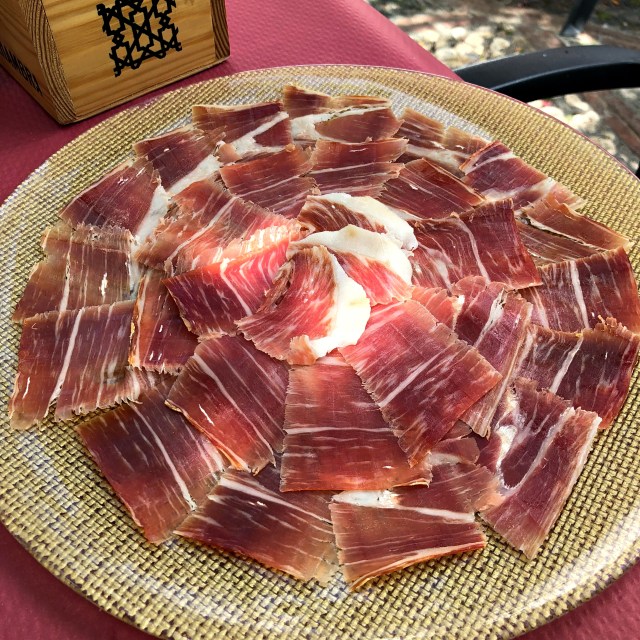
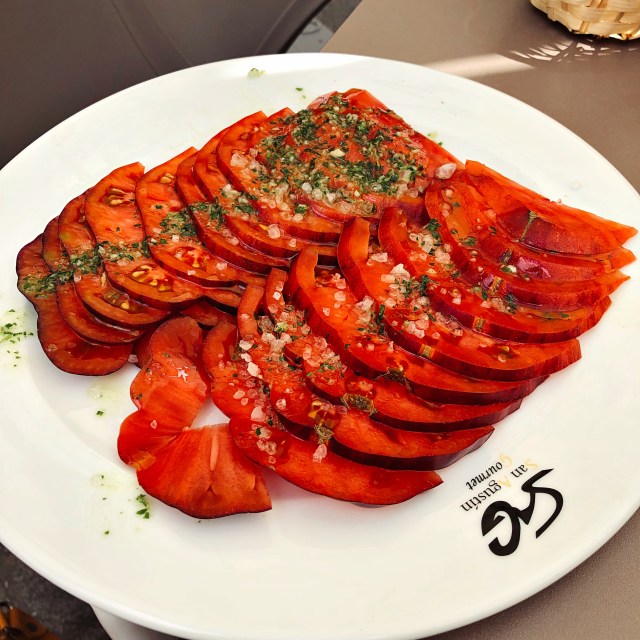

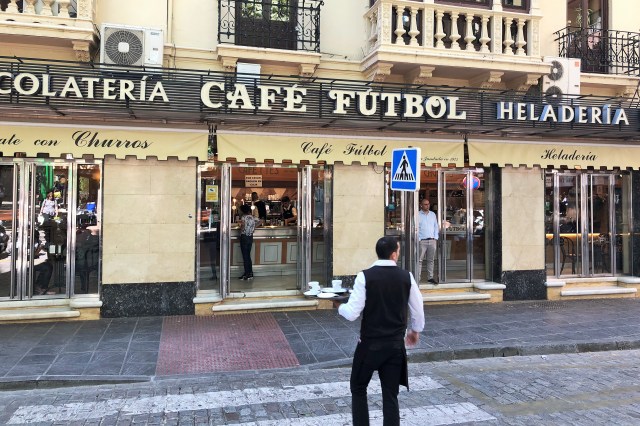


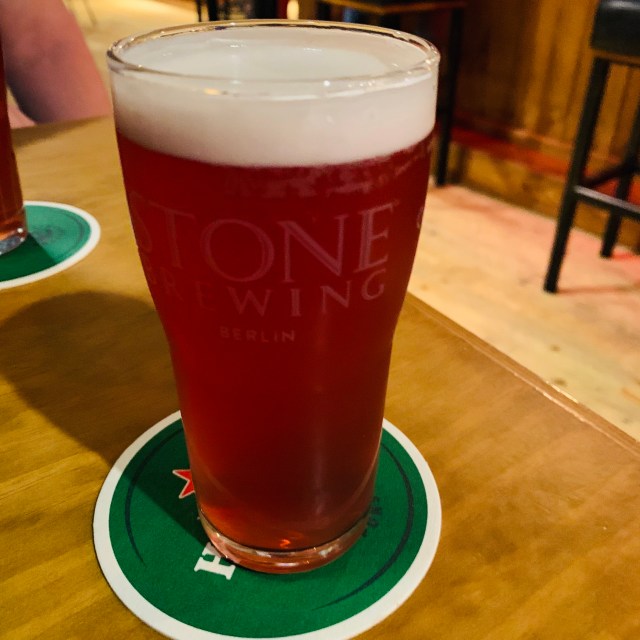


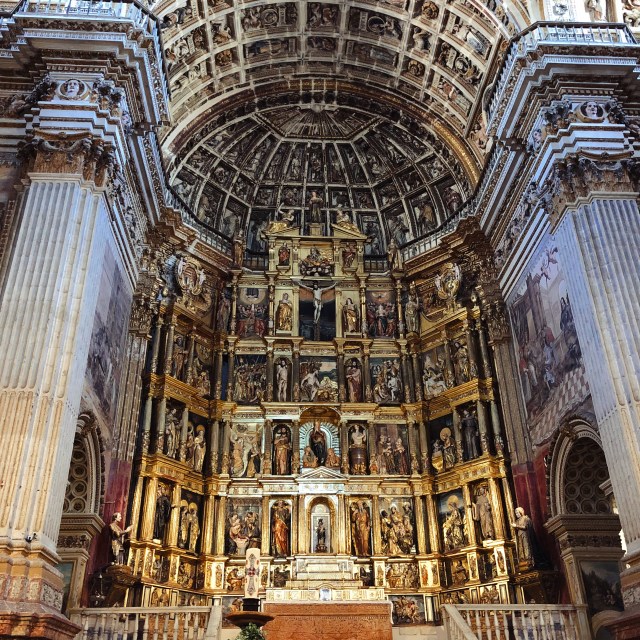


You write a very convincing series of reasons why Granada is a place not to be missed – I might have to put it on my ‘to do’ list; it sounds perfect for a long weekend, maybe early in the year, looking for some Winter sun. I remember picking a Spanish tomato off the the farmer’s vine many years ago and eating it as I would an apple – it was absolutely delicious, and you’re quite right – a million miles away from the hard, tasteless ones we get in the UK, undoubtedly fresh from the polytunnel.
Brilliant round up of places to eat, drink and visit. Those tomatoes look absolutely incredible!